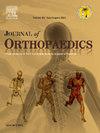Robotic-assisted “physiological alignment” TKA with a 3-degree varus inclination does not affect gait ability, regardless of pre-arthritic CPAK classification matching
IF 1.5
Q3 ORTHOPEDICS
引用次数: 0
Abstract
Background
Traditionally, the hip-knee-ankle (HKA) angle has been used as an indicator of lower limb mechanical alignment to predict postoperative outcomes in total knee arthroplasty (TKA). However, patients with knee osteoarthritis exhibit considerable individual variation in coronal plane alignment of the lower limb. The Coronal Plane Alignment of the Knee (CPAK) classification was introduced as a novel method to reflect these individual alignment characteristics. Nevertheless, it remains inconclusive whether aligning the lower limb to the patient's native CPAK phenotype before and after TKA leads to improved outcomes.
Objective
The purpose of this study is to investigate the impact of postoperative CPAK phenotypes and the changes from pre-to postoperative states on gait in robotic-assisted (RA) bi-cruciate stabilized (BCS) TKA using an asymmetric prosthesis aimed at achieving functional alignment (FA).
Participants
and Setting: This retrospective, single-surgeon, consecutive cohort study included 46 patients who underwent RA-BCS TKA.
Methods
Pre- and postoperative CPAK classifications were compared, and changes in the arithmetic hip-knee-ankle angle (aHKA), joint line obliquity (JLO), and gait analysis scores were evaluated both preoperatively and one year postoperatively.
Results
No significant differences were observed between the two groups in preoperative or postoperative walking ability, or in the postoperative changes in gait parameters.
Conclusions
RA-BCS TKA using physiological alignment and an asymmetric prosthesis with a built-in 3° varus inclination demonstrated no significant differences in walking ability, regardless of the prearthritic CPAK classification.
Level of evidence
Level Ⅲ
机器人辅助的3度内翻倾斜的“生理对齐”TKA不影响步态能力,无论关节炎前的CPAK分类是否匹配
传统上,髋关节-膝关节-踝关节(HKA)角度被用作预测全膝关节置换术(TKA)术后预后的下肢机械对齐指标。然而,膝骨关节炎患者在下肢冠状面排列上表现出相当大的个体差异。膝关节冠状面排列(CPAK)分类是一种反映这些个体排列特征的新方法。然而,在TKA前后将下肢与患者的原生CPAK表型对齐是否会改善预后仍不确定。目的本研究的目的是探讨CPAK术后表型和术前至术后状态的变化对机器人辅助(RA)双十字稳定(BCS) TKA使用非对称假体实现功能对齐(FA)的步态的影响。参与者和背景:这项回顾性、单外科医生、连续队列研究包括46例接受RA-BCS TKA的患者。方法比较术前和术后两组患者的CPAK分类,评估术前和术后1年髋关节-膝关节-踝关节算术角度(aHKA)、关节线倾角(JLO)和步态分析评分的变化。结果两组患者术前、术后行走能力及术后步态参数变化无显著差异。结论采用生理定位的ra - bcs TKA和内置3°内翻倾角的不对称假体在行走能力方面没有显著差异,与关节炎前CPAK分类无关。证据级别:Ⅲ
本文章由计算机程序翻译,如有差异,请以英文原文为准。
求助全文
约1分钟内获得全文
求助全文
来源期刊

Journal of orthopaedics
ORTHOPEDICS-
CiteScore
3.50
自引率
6.70%
发文量
202
审稿时长
56 days
期刊介绍:
Journal of Orthopaedics aims to be a leading journal in orthopaedics and contribute towards the improvement of quality of orthopedic health care. The journal publishes original research work and review articles related to different aspects of orthopaedics including Arthroplasty, Arthroscopy, Sports Medicine, Trauma, Spine and Spinal deformities, Pediatric orthopaedics, limb reconstruction procedures, hand surgery, and orthopaedic oncology. It also publishes articles on continuing education, health-related information, case reports and letters to the editor. It is requested to note that the journal has an international readership and all submissions should be aimed at specifying something about the setting in which the work was conducted. Authors must also provide any specific reasons for the research and also provide an elaborate description of the results.
 求助内容:
求助内容: 应助结果提醒方式:
应助结果提醒方式:


